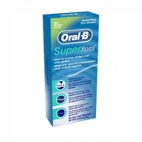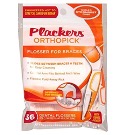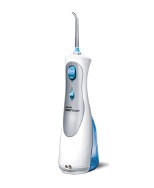Floss and your Orthodontic Appliances
10/06/2021
Plaque collects between our teeth making it a perfect region for bacteria to thrive. To minimise the risk of gum disease and decay daily flossing is essential.
Keeping your teeth clean during Orthodontic treatment will go a long way towards achieving a fabulous result.
No doubt your Orthodontist has provided you with special brushes for daily cleaning however the in- between surfaces of your teeth are areas where brushes cannot reach. Unfortunately, this is a common spot for food and plaque to collect making it a perfect region for bacteria to thrive. This can result in gum disease and decay. To minimise these risks daily flossing is essential, both during and after treatment.
The Australian Society of Orthodontists recommend the steps listed below as the easiest way to floss:
- Take a long piece of dental floss (roughly 18cm).
- Thread one end of the floss between the wire and your teeth. The floss should be aligned with the gap between your teeth. This gap is filled by moveable gum tissue.
- Wrap both ends of the floss around your 2 index fingers to gain more control of the floss. The more control you have over the motion, the less likely it is that you’ll hurt your gums.
- Use firm but gentle pressure to wriggle the floss between your teeth and remove all food particles and plaque build-up.
- Rinse and spit afterwards to remove plaque from your mouth.
Tip: Rather than holding the floss straight, have it form a ‘C’ shape to hug around each tooth.
Braces can make flossing difficult. Thankfully there are a few tools on the market to assist your efforts, which can be located in many pharmacies.
Superfloss
Similar to regular floss but this has a stiff end. It enables you to easily thread the floss underneath the wire on the braces, prior to following the usual flossing steps.

Ortho Flossers
These are specially designed with thin arms that slide underneath wires allowing access between the teeth to remove food and plaque.

Interdental Brushes
Great items for cleaning large spaces and under bridges but should be used with care around areas of healthy gum so as not to damage it. If you think this is the tool for you, ask your Doctor or Hygienist about how to use it correctly.
Water Piks
 Easier to use than traditional floss these are a good alternative for those with limited dexterity. Although they are great at removing large deposits of debris in braces, the science tells us that they are not quite as effective as floss when it comes to cleaning in between the teeth.
Easier to use than traditional floss these are a good alternative for those with limited dexterity. Although they are great at removing large deposits of debris in braces, the science tells us that they are not quite as effective as floss when it comes to cleaning in between the teeth.
Speak with your Orthodontist or Hygienist who will be happy to assist you to tailor an individual daily Oral Hygiene plan. This will include appropriate tools and techniques for brushing and flossing to ensure that your smile remains as healthy as possible.